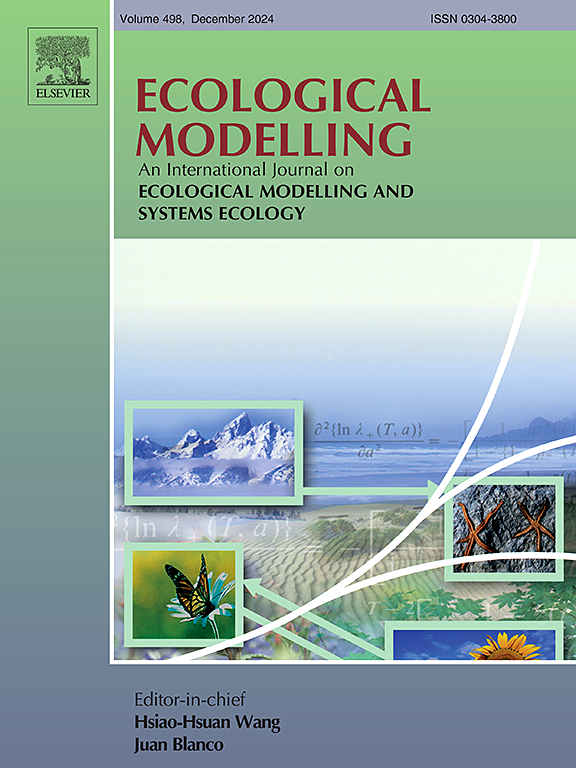A coupled eco-hydrological model to simulate vegetation condition from soil moisture deficit in a data-scarce semi-arid wetland
IF 2.6
3区 环境科学与生态学
Q2 ECOLOGY
引用次数: 0
Abstract
Environmental flows are increasingly being used to restore or maintain wetland vegetation condition, with vegetation response being one of the primary considerations when determining environmental water releases. However, it is challenging and expensive to evaluate vegetation condition over time and at scale from on-ground monitoring to support such decisions. This study presents a model that predicts the Leaf Area Index (LAI) used as a proxy for vegetation response to climate and river flow drivers. The proposed coupled eco-hydrological model simulates floodplain inundation extent using a mass balance equation and estimates soil moisture deficit by modifying the IHACRES-CMD hydrological model to account for both climate and inundation. The eco-hydrological model finally predicts LAI via a linear regression using simulated soil moisture deficit as a predictor. The conceptual-empirical approach is the first attempt to use soil moisture-related information to predict vegetation condition in an environmental flow management context, compared with the more commonly used flow- and inundation-based metrics in floodplain wetlands. The model achieves promising performance in a semi-arid wetland, the Narran Lakes in Australia. The results based on cross-validation on different periods show that: (1) inundation influences vegetation response significantly; (2) soil moisture deficit, when estimated via a modified hydrological model, is a useful predictor of vegetation response, especially for drought periods when flow releases are most needed; and (3) the optimal frequency of flood events required to maintain vegetation health in the Narran Lakes is one event every 4-6 years. The simple structure of our eco-hydrological model, which utilizes regularly monitored hydro-climatic variables such as precipitation, evapotranspiration, and inflow, could potentially be used in vegetation monitoring and management in similar semi-arid wetland systems. This requires processing of remote-sensed vegetation information and calibration of parameters in the model from the hydro-climatic data.
求助全文
约1分钟内获得全文
求助全文
来源期刊

Ecological Modelling
环境科学-生态学
CiteScore
5.60
自引率
6.50%
发文量
259
审稿时长
69 days
期刊介绍:
The journal is concerned with the use of mathematical models and systems analysis for the description of ecological processes and for the sustainable management of resources. Human activity and well-being are dependent on and integrated with the functioning of ecosystems and the services they provide. We aim to understand these basic ecosystem functions using mathematical and conceptual modelling, systems analysis, thermodynamics, computer simulations, and ecological theory. This leads to a preference for process-based models embedded in theory with explicit causative agents as opposed to strictly statistical or correlative descriptions. These modelling methods can be applied to a wide spectrum of issues ranging from basic ecology to human ecology to socio-ecological systems. The journal welcomes research articles, short communications, review articles, letters to the editor, book reviews, and other communications. The journal also supports the activities of the [International Society of Ecological Modelling (ISEM)](http://www.isemna.org/).
 求助内容:
求助内容: 应助结果提醒方式:
应助结果提醒方式:


